Zeiss APO Sonnar 135mm f/2 (ZF.2) Review
Introduction:
One of the lenses that I always wanted to test, partially because of its great reputation and partially because it represents my favorite focal length for people shots, finally found its way to Verybiglobo.com
Zeiss APO Sonnar 135mm f/2 in Nikon ZF.2 mount
APO in the name means, that lens is Apochromatically corrected, or in other words – optics of this lens align all three color light components – green, blue and most importantly red into same focus plane. Lenses that are not Apochromatically corrected usually show strong purple (or green) fringing at contrast edges.
APO however is rather generic term. It doesn’t state to which extent lens is apochromatically corrected and especially how large projection area of the lens is corrected. Most lenses would be apochromatically corrected in the center of the frame, but problems starts when we move toward edges.
Marketing experts love this kind of words and thus we can find APO sign on many lenses that are as much apochromatically corrected as our government is willing to reduce taxes. Ok, maybe a bit more…
With modern software capabilities, it is possible to correct CA to certain extent but the problem is not only in removing purple fringing in terms of color, it is sharpness that suffers too (because one part of the light spectra, usually red is slightly out of focus.)
Zeiss APO Sonnar 135 f/2 is supposed to have good apochromatical correction. How good, we are about to see…
BTW I have read that Zeiss APO Sonnar 135mm f/2 shares same optical concept as Zeiss Otus lenses but was introduced before Otus name was invented. I will try to ask Mr. Nasse to confirm or deny this.
Mr. Hubert Nasse (Strategic Business Unit Camera Lenses Laboratory, Staff Scientist), one of the most competent people in Zeiss AG, was so kind to reply on above question, making it more clear:
In fact the Apo-Sonnar could have been included in the OTUS line, but at the time of its development the OTUS project was not yet decided. It is at least very near to OTUS in terms of general level of correction, Otus chromatic criteria are still a bit more tight, but nevertheless the 135 deserves the term ‘APO’, since it is clearly different from many other similar lenses.
Zeiss APO Sonnar 135mm f/2 is manual focus lens, but it has electronic communication with camera allowing for aperture control, all modes exposure functionality including TTL metering and full Exif record. In my LR 5.7 lens is reported as Zeiss Apo Sonnar T* 2/135 ZF.2.
Manual focusing with Zeiss is usually great experience, but in this case, acquiring critical focus with my Nikon D800E wasn’t easy at all. With a scary thin DOF, you’ll need lot of practice or special viewfinder screens to be able to focus properly. This is not a shortcoming of the lens though, but rather of the digital camera behind it.
I thought that focus is fine in the shot above, but it wasn’t, which is shame because our dog rarely stands still for longer than couple of milliseconds.
This time I did better, but still not perfect.
I am shooting using manual focus quite often, but rarely I do so with such a low DOF in perspective. By shooting more and more with this lens, I become more confident and my keepers rate increased, but if you are not experienced with manual focusing, your learning curve might be very steep.
Using lens on my Nikon FM3a was much nicer experience and keepers rate was fine from the beginning. There is also chance that you consider to use this lens with mirrorless camera using EVF. While EVF will make manual focusing more precise using peeking and/or magnification, EVF’s refresh rate lag and low light noise are not ideal either.On top of that, lens is heavy and won’t balance well on most mirrorless cameras that I know.
Let’s first see as usual – what Zeiss says about this lens:
Apo Sonnar T* 2/135
Turning far to near
Enjoying the evocative atmosphere of dusk against a dreamlike backdrop – as an inconspicuous observer, the tele lens lets you experience this unique moment from the distance. Detached from the background, the Apo Sonnar T* 2/135 enables an incomparable interplay of soft evening light and radiant colors.
Offering the utmost flexibility in a wide diversity of situations, this tele lens can also capture the actor’s emotions on the stage from the third row and take breathtaking portrait photos.
Here is the lens design scheme from Zeiss pages:
Reading further about lens features, there are two most interesting things IMHO:
1. APO Design (as written above)
Apochromat
Because this lens is an apochromat, chromatic aberrations (axial chromatic aberrations) are corrected with elements of special glass with anomalous partial dispersion. The chromatic aberrations are therefore significantly below the defined limits. Bright-dark transitions in the image, and especially highlights, are reproduced almost completely free of color artifacts.
2. Close minimum focus distance
Close focusing distance
The lens design ensures consistent imaging performance throughout the entire focusing range as well as sharpness to the periphery of the image. The asphere’s more complex surface profile can reduce or eliminate spherical aberration and also reduce other optical aberrations compared to a simple lens.
When we look at Apochromat description, we might notice that “CA are significantly bellow the defined limits” formulation. As I wrote, there is no standard according which we can now what this exactly means, so we’ll need to see it in practice. Regarding minimum focus distance, it is very welcomed addition, allowing some tight close-ups at very solid 1:4 magnification ratio. Need more? APO lenses are in theory very good for macro, so just add macro tubes and 135 APO Sonnar can become powerful macro lens too.
Here is full technical specification:
In the box:
Lens comes in paper box, typical for most Zeiss lenses. Blue logo, black print and famous red *T on white semi glossy background, looks elegant and minimalistic.
In the box, well protected with polystyrene filling are lens with caps, lens hood, and papers including user manual, 3 years warranty card promotion, warranty card itself, quality control certificate (hand signed) and suggested accessories.
Appearance and build quality:
The first thought is – this lens is big and heavy. In reality however, compared to its competitors, it’s not that bad. Unlike most of its competitors Zeiss APO Sonnar extracts when focused to 0.8m so it doesn’t feature internal focusing. Being a manual focus lens, I think this is clever decision, because it can be more compact for transport as we will see in the following comparison images.
(Click on and keep pressing directional arrows button and move slider left or right to reveal corresponding image)
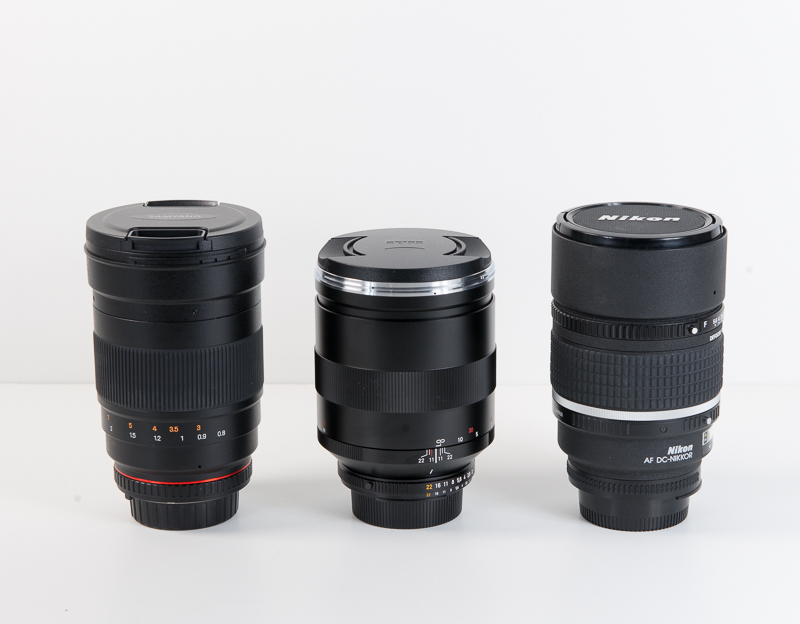
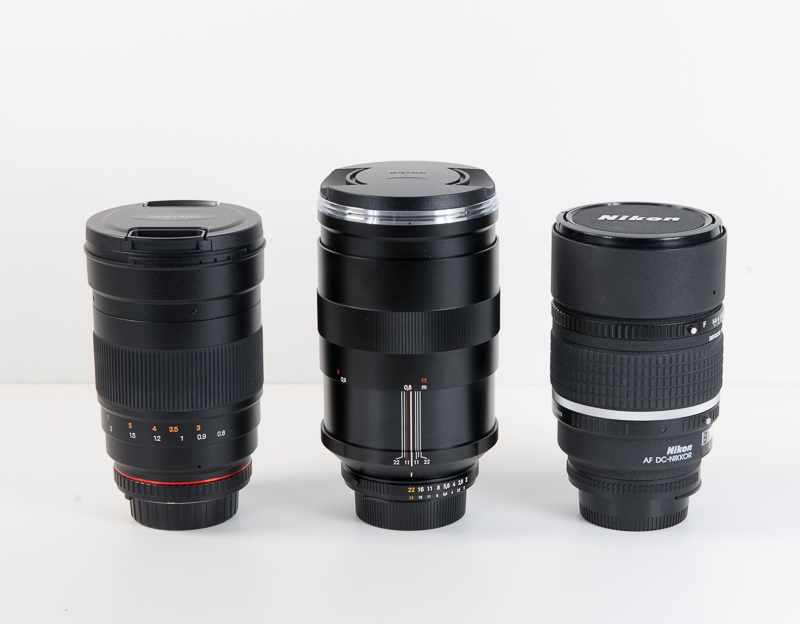
As you can see, when focused to infinity, Zeiss is shortest among its peers (Samyang 135mm f/2 ED UMC on the left and Nikkor 135mm f/2 AF DC on the right), but when focused to MFD, it becomes longest.
With hoods mounted on, situation changes a bit, because of the Zeiss rather deep all metal hood construction. (Nikkor 135/2 AF DC has short built in hood)
But as I said, size is most important for transport reasons and for that, Zeiss is actually quite small in comparison.
Lets look at some other comparative lenses and respective sizes as well as weight.
From left to right: Zeiss APO Sonnar 135mm f/2, Canon EF 135mm f/2 L USM, Sony-Zeiss Sonnar 135mm f/1.8 ZA, Samyang 135mm f/2 ED UMC, Nikkor 135mm f/2 AF DC
With hoods mounted and focused to MFD, Zeiss APO Sonnar 135/2 is longest in this comparison. But with hood reversed, collapsed for transport it is the shortest one.
From left to right: Canon EF 135mm f/2 L USM, Nikkor 135mm f/2 AF DC, Samyang 135mm f/2 ED UMC, Zeiss APO Sonnar 135mm f/2, Sony-Zeiss Sonnar 135mm f/1.8 ZA
When it comes to weight, Zeiss APO 135mm f/2 is second heaviest though.
| Lens | Sony SAL 135/1.8 ZA | Zeiss APO Sonnar 135/2 | Samyang 135/2 ZF.2 | Nikkor 135/2 AF DC | Canon EF 135/2 L USM |
| with hood | 1190 gr. | 1052 gr. | 907 gr. | 795 gr. | 786 gr. |
| without hood | 1030 gr. | 957 gr. | 848 gr. | 795 gr. | 731 gr. |
Built quality is exceptional as with other Zeiss lenses made in Cosina factory. Glass and metal. There isn’t any kind of visible protection against dust or moisture, such as rubber gasket on the mount e.g.
Handling:
On my Nikon D800E, despite being large and heavy lens, it balances very nicely. Due to slightly thicker body and well positioned focus ring, lens nicely fits in the palm of my left hand and with a buttery smooth focus ring it is easy to fine tune the focus using finger tips. Very long focusing throw of almost 270° however, requires full hand involvement to bring focus near the focus plane zone. On the other hand, long focus thread allow for super precise focus adjustments, which certainly help to deal with thin DOF.
When I mounted lens on my Sony A7 camera using Novoflex adapter, it becomes significantly front heavy combo and overall feeling was not so pleasing. I am sure one can get used to it, but it simply fits much better to larger DSLR body.
Please help support this page and upcomming reviews and buy through affiliate links, with no extra cost for you:
Buy on BHPhoto: 135mm f/2 Apo Sonnar T* ZF.2 Lens for Nikon F Mount
Buy on Adorama: 135mm f/2 Apo Sonnar T* ZF.2 Lens for Nikon F Mount
Buy on Amazon: 135mm f/2 Apo Sonnar T* ZF.2 Lens for Nikon F Mount BEST OFFER!
To help this page survive, your donation will be highly appreciated.
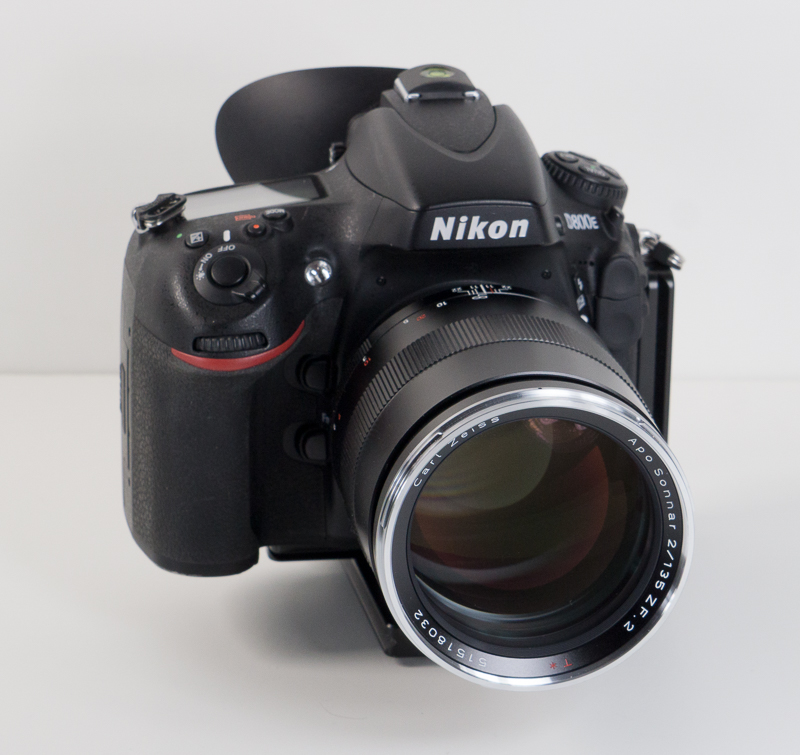

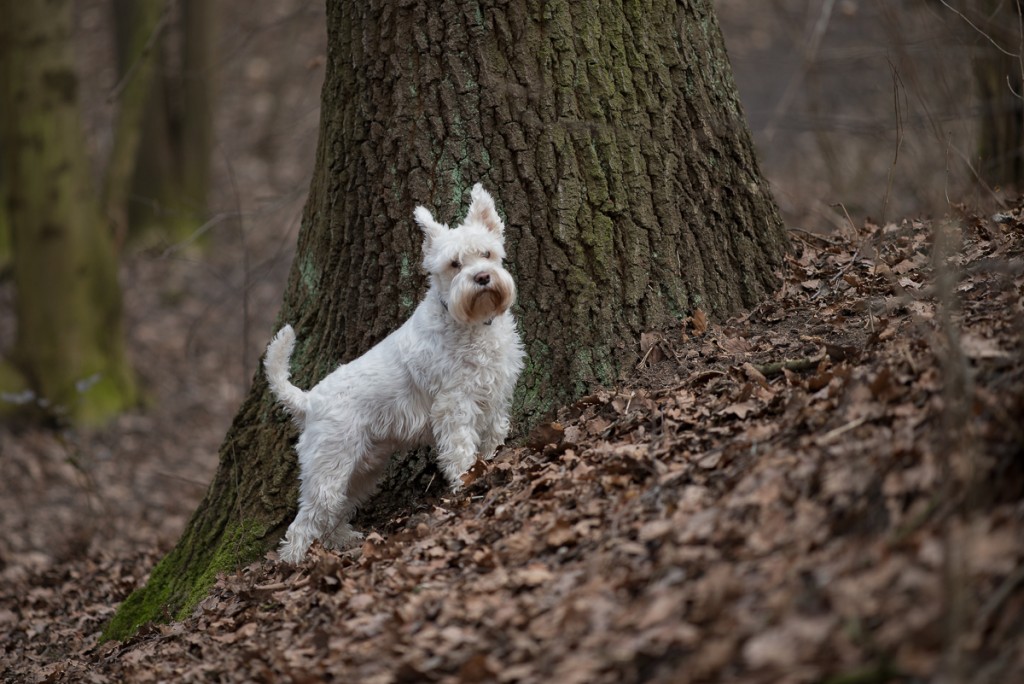
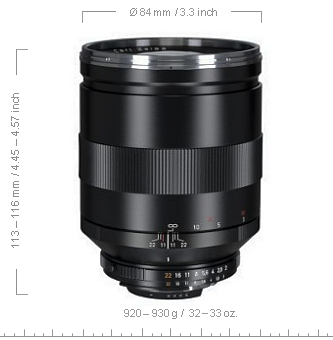
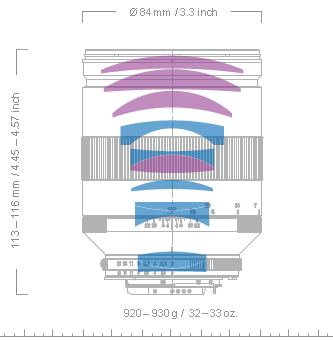
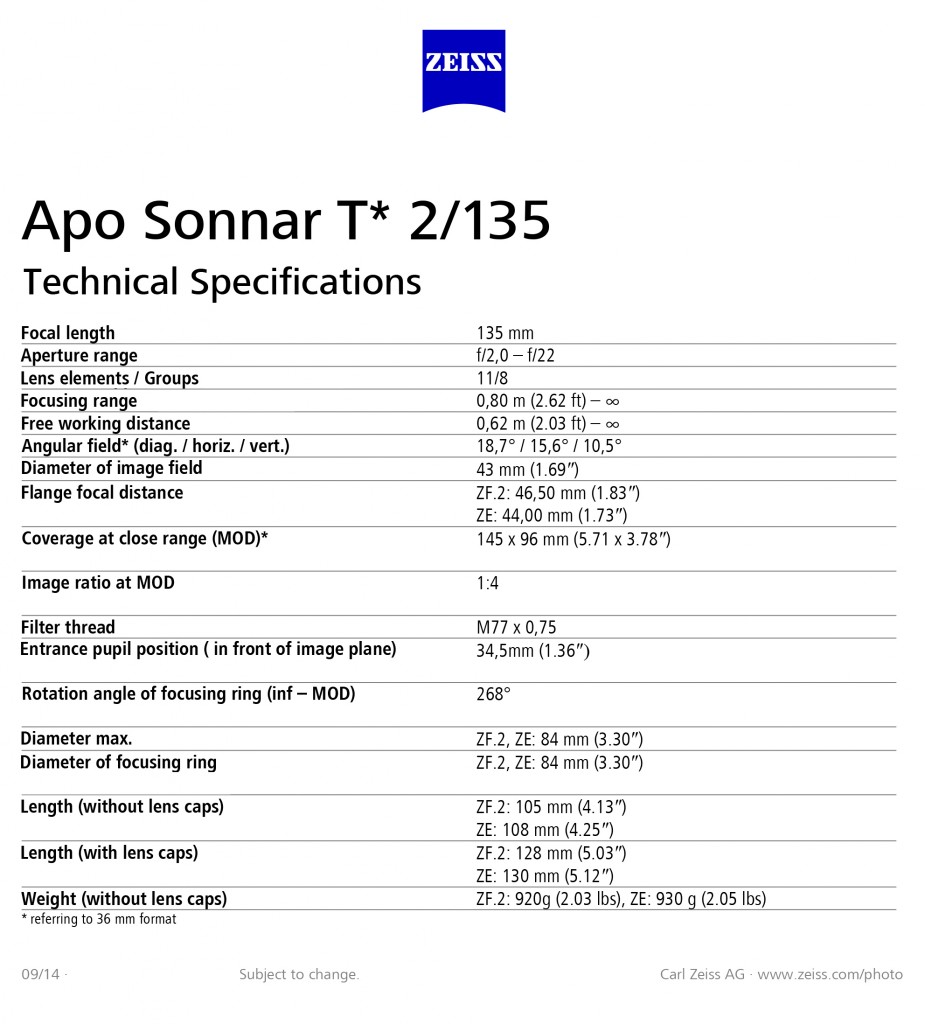
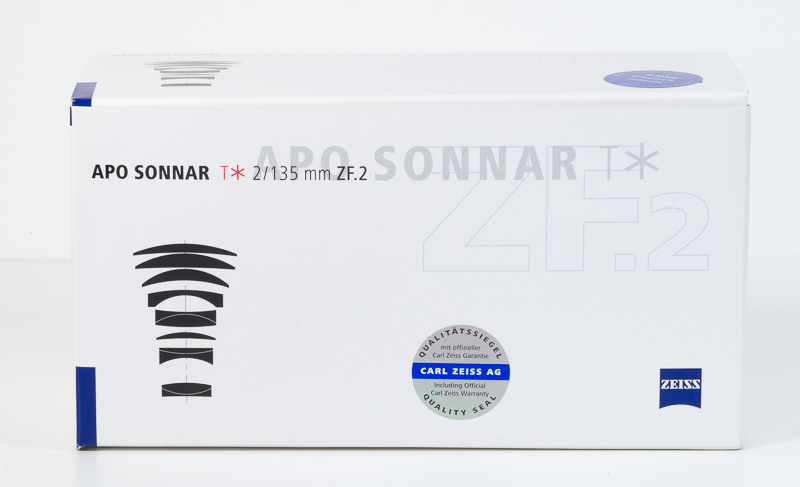
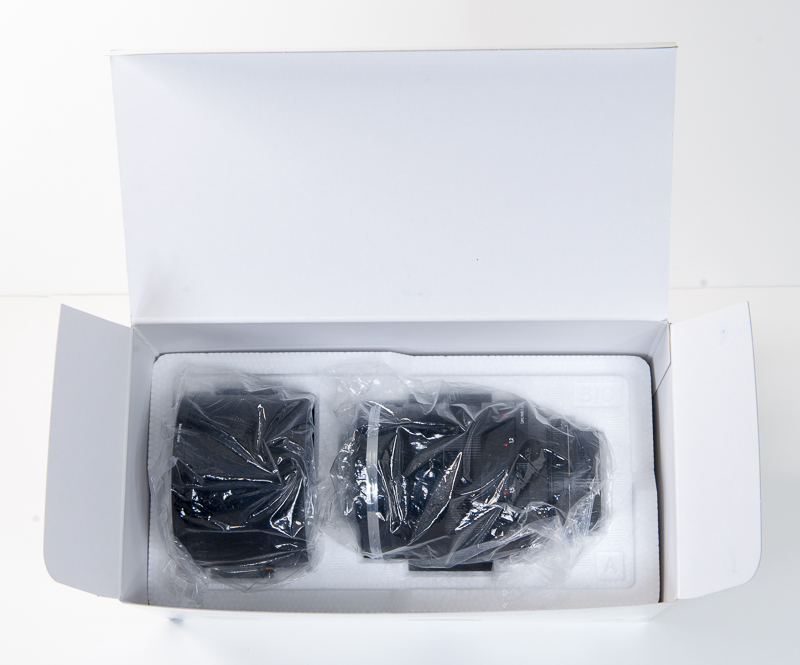
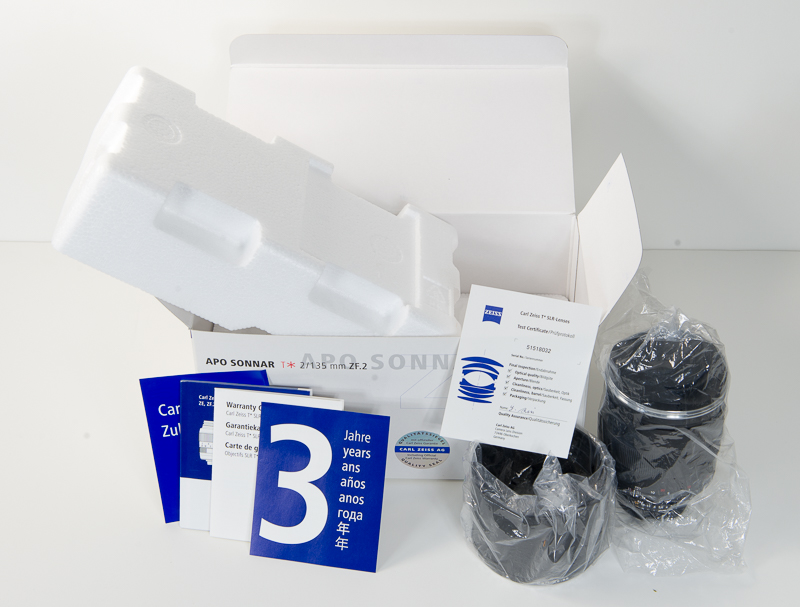
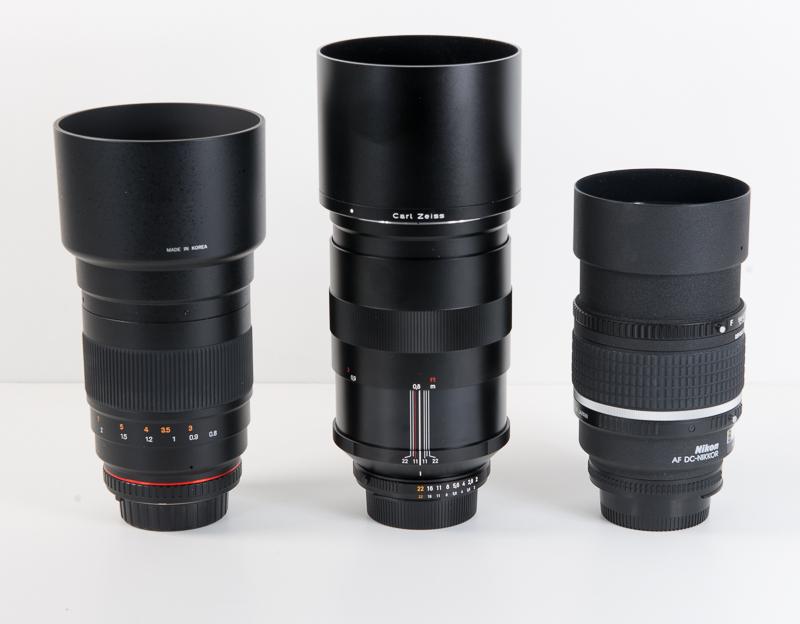
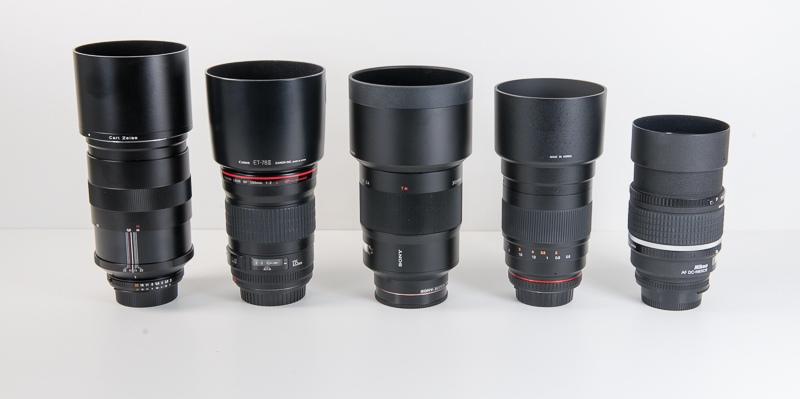
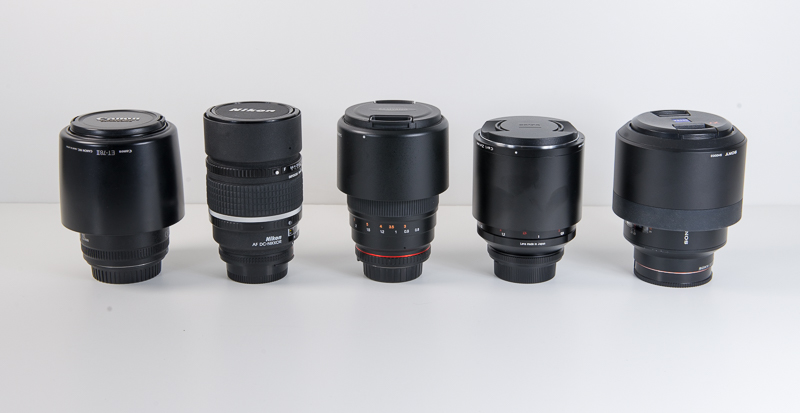
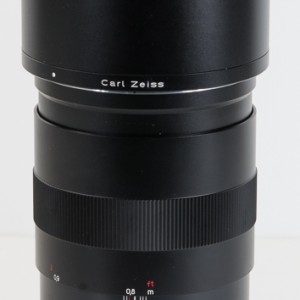
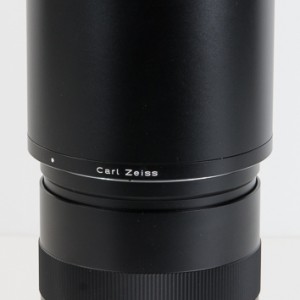
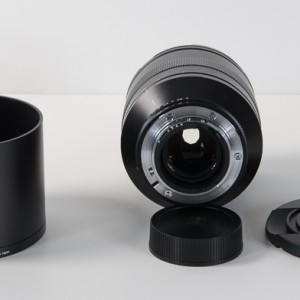
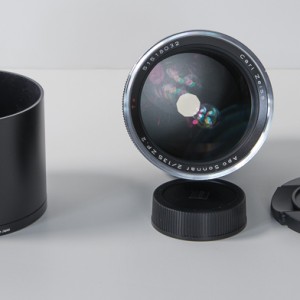
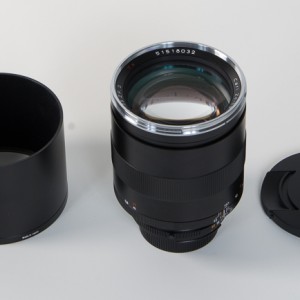
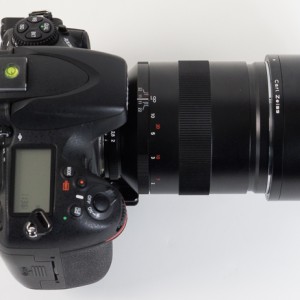
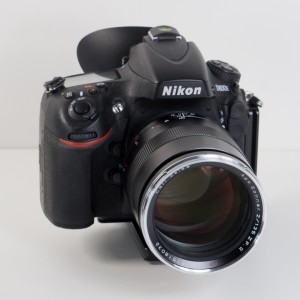
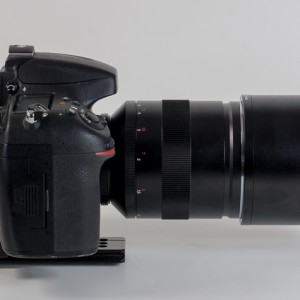
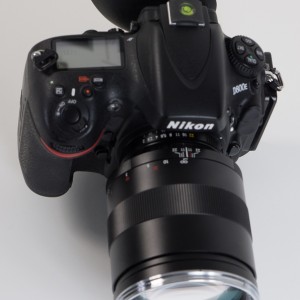


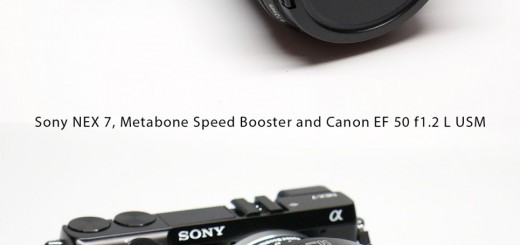













Hi. Was just curious as to which D/SLR would be suitable (not at fault regarding precise focus) at achieving critical focus with the Ziess 135mm f2 manual focus lens wide open, with its shallow depth of field. quickly without viewing aids. Especially do to my weakening eyesight as I age. For I do appreciate fine quality, but only when practical. Dennis
Hi Dennis,
using manual focus lenses with recent DSLR cameras is very tricky… There are some after market split screens such as – http://www.focusingscreen.com/work/d800en.htm
but using it will probably cause lot of troubles related to exposure or super imposed information in viewfinder.
Another option would be to use rear LCD with a hoodman or similar loupe and camera in live view mode (similar as it is used by videographers). In that respect I would suggest recent Nikon flagships such as D810 and D750 because they are using higher quality/resolution screens.
You can of course use mirrorless cameras such as Sony A7 series, if you don’t mind lack of EXIF, iTTL and compressed RAW.
I have solid success in using my regular viewfinder with DH17 magnifier view-piece and rubber eyepiece.
Initial focusing is just a part of the problem though, because DOF is so thin, that slightest movement of you or yours model will result in blur, especially at pixel level. There are nice software tools recently for repair of small motion blur such as shake reduction in photoshop CC or piccure + e.g.
Finally, it’s also about technique that will best suits your shooting style. I tend to use high speed drive mode (3-4 frames per second) whenever possible. When acquiring critical focus (or what I believe it should be) I take deep breath (which moves me slightly backward), fire the shutter and keep blowing the air out (which moves me slightly forward). At SS from 1/200s and faster I usually manage to have 1-2 sharp images in the series.
Cheers,
Viktor
One of the best reviews i ever read, much better than any done with in lab measurements. The Zeiss is not for me, i came here searching for reviews of the Samyang 135/2, which i now own (my 5th Samyang).
Keep the excellent work going!
Tomas
http://www.pbase.com/tomasg_71
Thank you very much Tom, I think you made great choice with Samyang.
Cheers,
Viktor
Very good review. I always was reluctant to get a Nikkor 135/2 dc due to color shift or lack of sharpness wide open. In a recent thread at Dpreview a very well respected photographer showed excellent images with sharpness and contrast better than the 70-200/2.8 vrii, a lens which is well respected. I pointed her to your blog and asked about her test, which didn’t show this softness and color shift. She explained that the Nikon lenses have oftentimes a problem with the DC ring. It is not perfectly calibrated (Nikon confirmed) and needs to be offset. Having found the “true” dc-ring position the results are excellent even wide open. Nevertheless, doesn’t change the fact that the Zeiss 135/2 is one of the best lenses out there.
Hi HF,
thank you for your comment.
I tested DC ring calibration prior to this test (right after the purchase) and what was presented here, was best wide open result, that I was able to achieve with the lens
I also tried two copies prior to purchase and this one was better of the two (sharpest in the center).
This doesn’t mean of course, that someone else can’t have better luck with its sample.
Other reason might have something to do with specific lighting conditions and distance to the subject.
I haven’t tried 70-200 f/2.8 VR II, we don’t have this lens, nor we have any contact with Nikon to get a testing sample, so I can’t comment on that, but I assume that comparison was made at f/2.8 and most of our results here were captured at f/2.
Zeiss is a fantastic lens for sure, but all of the lenses tested here are exceeding my photographic needs and skills anyway.
Cheers,
Viktor
Great review of Zeiss 135mm APO lenses and comparison (both lab and field) for the other 2 Nikon mount 135mm lenses. I got a 105mm F2 DC which is not as razor sharp as Zeiss 135mm APO (nor makro planar 100mm), but with a nice rendering skin tone. Thus my wife prefers the Nikon 105 much more than the Zeiss, because most of the time, girls don’t want to reveal the tiny defects on their face. Anyway, all great lenses but with definitely different emphasis.
BTW, the external purchase link seems to be messed up between Amazon and Adorama.
Hi Victor,
I like those Nikon DC lenses too. 105 DC is very nice lens indeed.
Thanks for the link warning, I will ask our IT guy to check it out.
Cheers,
Viktor
I have both the 135mm Zeiss and the 135mm DC Nikkor.
The are both fantastic wide open on my D600 or D810.
The DC Nikkor gives you Bokeh softness control to your
personal taste. Great review.
Hi Paul and thank you for your comment. I agree, they are both lenses with unique “signature”.
Cheers,
Viktor
Great review and good comparison. It almost feels like the Zeiss is good yet the vfm makes the Samyang a brilliant lens.
I had the Canon version of this lens and loved every single picture out of this lens. the color and pop are nothing short of amazing.
Is Samyan similar in that feel? From the pictures on close ups it does look like Samyang is sharper but as an overall picture there is something about the zeiss.
Is it just me ?
Hi Mark,
Samyang has somewhat warmer rendering (toward red) and build quality is nowhere near Zeiss. But that’s about it, and in a real life, I doubt that many will notice any resulting differences, when lenses are compared next to each other.
Zeiss is however tremendous lens in every aspect and beside giving the photographer outstanding optical corrections it is joy to use, especially when it comes to the manual focus speed and precision. (Tactile and responsive feeling is very important for MF)
Cheers,
Viktor
I agree with everyone here saying what a great review this was. It was exactly what I needed. I purchased the 135 DC about 6 months ago, and as much as i’ve been loving the bokeh, it bothers me that i have to shoot it at 2.5 (neutral) to get anything even close to usable in my standard, even then its not as sharp as i would like it.
So my next thought was… What could I replace it with, and the only two options i found were these two. My question to you is if you’ve found the overall contrast to be lower with the samyang? As well as the colors being too warm? I have a Rokinon/samyang 24 tilt, and the overall contrast seems low and flat… with the colors been quite warm. that being said I’m also aware that the 24 tilt isn’t exactly known for being sharpest lens.
I do use a color checker, so the colors can be calibrated, but its obviously not the best starting point if you know what i’m saying.
Hi jp,
thank you for the comment.
Regarding contrast, I can’t say it’s lower than Zeisss. In my eyes it’s on par (micro contrast I mean) and even in direct back light situations it holds well (that’s the area where Zeiss is traditionally very strong)
Color shift toward warm tones is obvious though and I wrote about it. I won’t find this as a deal braker, if you are not planning to:
a) use several primes per project (wedding eg.)
b) shot video often.
In both cases, you might find color shift correction in pp annoying and time consuming.
Hope it helps,
Viktor
Wow, i didn’t even notice your review was multi pages of indepth review! I didn’t see the color page. Now it leaves me questioning about the angle of view thing. Would you say that it really is just that close focus quote? I already have an 85 and i need the 135 to be a good step from eachother, otherwise i have a bit of redundancy in my bag. In part I’d like to be able to shoot Wide open for the best bokeh, but also to be able to let as much light as possible in dim churches (weddings). It makes me wonder if the vignetting on the ziess wide open cancels out the bright nikkor stopped down to f/2.5 (for usable sharpness)
Hi jp,
I would say that having 85 and 135 is a bit redundant in most situations, but to which FL is more useful, only you can find the answer. If you have any (even cheap manual zoom form 80′) something like 80-200 and similar, you can take it out for a week or so at 85 and later at 135 FL and simply get idea of what was more pleasing experience (you can use duct taoe to fix FL).
Thing is, that there will be always something longer with larger compression and smoother bokeh (resulting from shallower DOF).
My prefered FL are 14,21,28,85,200 mm, but lot of people will go with something like 16,24,35,50,85,135,200
I don’t feel a gap between 85 and 200 but YMMV. However, not so long ago, I prefered 135 over 85, so preferences are not only individual, but they are evolving in time.
If I have enough distance from the subject and I am after smooth background, it is hard to beat Canon 200/2 L IS (Nikon has similar lens), but I am loosing any kind of intimacy with the model. Image become “distant”, aesthetically impressive but emotionally a bit empty. Getting closer to the subject reveals more of the model personality and brings it closer to the environment. Simply said – 135 and longer are for studio like set-ups (even on location), while 100 and bellow are better (IMHO) for environmental portraits.
To get close to (almost equal) sharpness of the Zeiss/Samyang in the mid frame, you’ll need to stop nikkor to at least f/4. But using Nikkors Defocus Control, you can actually make your subject more isolated (from the background) in some situations, even if sharpness in general is lower.
It is always hard to give a good advice on a subject of lens choices, because we are all suffering fron GAS (or let’s say LAS in this case) and excitement of getting new “toy” often surpass any rationals behind.
I am testing and preparing review of new Milvus 50/85 vs comparable Planars and Otuses.
I don’t need any new lens for my job, but after seeing those lenses compared I ordered Otus 85/1.4. Why? Because it has best correction of CA that I ever saw on lenses bellow 200mm and because I knew that I will never be satisfied till I don’t get “best” 85. (Best optical correction I mean).
In a result I probably saved some money, jumping over Milvus (which is BTW excellent lens too), but I spent a fortune for the lens that in a real life, won’t change quality of my images. (At least not to the level that my clients could recognize)
If you really need 135, go with Zeiss. It is the best you can buy recently in that FL and if you don’t need it or you are not sure about FL, try cheap zoom as I suggested or try Samyang because you will loose less in case of re-selling.
Just my 2c.
Cheers,
Viktor
Yeah, I deffinently feel like 85mm is more practical in many situations, but I prefer 135 for a tight headshot/head+shoulders. I just think that the 85 isn’t compressed enough for those type of images. Thats why carry both, 135 if i can… 85 if I cant. 70% of the time my camera has the 85 mounted on it, but i roll with a 20-50-85-135 right now (outside of specialty tilt and macro’s), some day i’ll pick up a 35 but I’m really not a fan of anything in the 24-70 range… its like theres a lack of pizaz, but also not too flattering either…
money is actually tight, even though I do have the DC, it would be quite a hurdle to sell the dc for $800-$900 and turn around and buy a $1800 Zeiss. Thats obviously why the Samyang is so attractive, but its like “is it worth it?” I’d be getting funky colors, and greater vignetting, and possibly loose a fair amount of FL, and obviously AF to switch to the Samyang. IDK i sit at a crossroad and your artical is top notch!
Thanks jp and good luck with your choice. On a positive side, you can hardly make critical mistake those day. Oh and if you want maximum isolation at 135, how’s about – http://www.zyoptics.net/product/pre-order-mitakon-speedmaster-135mm-f1-4/
Cheers,
Viktor
Holly HOLGA Batman, that is a fast 135!
Yeah… It’s very compact and light too…
I would love to test it though, but with only 100 pcs. planned for production, (or maybe that’s just marketing trick?) I would hardly be able to put my dirty hands on it. Dpreview tested preproduction sample and if I remember correctly, they were kind of positive.
Cheers,
Viktor
Thanks for the review. Looks like I am putting my money in the Samyang, same sharpness and better bokeh/separation for a quarter of the price.
In the color rendering test, the Zeiss image is actually from the Samyang.
Color rendering is the most important difference between the two lenses as far as IQ is concerned, so that should be corrected.
^^^ I mean the one with WB corrected.